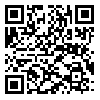Volume 7, Issue 13 (4-2017)
JRSM 2017, 7(13): 13-23 |
Back to browse issues page
Download citation:
BibTeX | RIS | EndNote | Medlars | ProCite | Reference Manager | RefWorks
Send citation to:



BibTeX | RIS | EndNote | Medlars | ProCite | Reference Manager | RefWorks
Send citation to:
Abbasgholi poor A, Khajavi D. Levels Motivation and Reasons Success and Failure of Elite and Sub-Elite Female Athletes in Individual Sports. JRSM 2017; 7 (13) :13-23
URL: http://jrsm.khu.ac.ir/article-1-2585-en.html
URL: http://jrsm.khu.ac.ir/article-1-2585-en.html
Abstract: (9921 Views)
When an athlete experiences a failure or a success naturally think about its reason(s) and actually search the responsible for the situation. Therefore, the purpose of this descriptive - correlational study was surveying attribution and motivation styles of elite and sub-elite female athletes in individual sports. The statistical population was female athletes in swimming, badminton, karate, taekwondo, table tennis and archery sport teams from which 120 samples selected availably. Data collected with the Attribution Style Questionnaire (ASQ) and Sport Motivation Scale (SMS).Data was collected and analyzed using multivariate analysis of variance (MANOVA) and Pearson correlation coefficient test at a significance level of 0.05. The results showed that elite and sub-elite athletes' attribution style was different significantly (P ≤ 0.05). Also, there were not significant differences between amotivation levels of elite and sub-elite athletes (P ≥ 0.05). Results indicated that there were no relationship between elite and sub-elite athletes' attribution and motivation styles (P ≥ 0.05). Overall, it can be concluded that there were significant differences between elite and sub-elite athletes' attribution styles and motivation levels, (except amotivation) and not significant relationship between attribution styles and motivation levels in this two women group participating in individual sport.
Type of Study: Research |
Subject:
motor behavior
Received: 2014/08/30 | Accepted: 2015/12/7 | Published: 2017/08/23
Received: 2014/08/30 | Accepted: 2015/12/7 | Published: 2017/08/23
References
1. Hanin, Y.L. (2000).Emotions In Sport. Champaign, IL: Human Kinetics Martin, G.L., Vause, Schwartzman, L. (2005).Experimental Studies of Psychological Interventions with Athletes in Competitions Why Few? Behavior modification, 29,616-64.
2. Beck, A.T. (1983)."Cognitive Therapy of Depression: New Perspectives". In Clayton, P.J. And Barrett, J.E. Eds.Treatment of Depression: Old Controversies and New Approaches. Raven Press: New York.187-195.
3. Beck, A.T., Epstein, N., Harrison, R.P. And Emery, G. (1983). "Development of the Sociotropy Autonomy Scale: A Measure of Personality Factors In psychopathology". Unpublished Manuscript, Center for Cognitive Therapy, University of Pennsylvania Medical School, Philadelphia.5, 154-167.
4. Slavin, R.E. (1986).Educational Psychology: Theory into Practice, John Hopkins University Press, New York.4, 149-210.
5. Weiner, B. (1985).An Attribution Theory of Achievement Motivation and Emotion. Psychological Review, No.92, 548-573.
6. Bar-Tal, D. (2000).From Intractable Conflict through Conflict Resolution to Reconciliation: Psychological Analysis.Vol.21 (2), 351-365.
7. Cox RH. (1998). Sport Psychology: Concepts and Applications. 4th Edition. McGraw-Hill. United State of America.6, 385-415.
8. Hendy H. M., Boyer, B. J. (1993).Gender differences in attribution for triathlon performance. Sex Roles, 29, 527-542.
9. Rosenbaum, M. (1999). Learned Optimism, Knopf Pub. USA.32-96
10. Forsyth, D.R., McMillan, J.H. (1990).The Attribution, Effect, And Expectations': A Test of Wieners Three Dimensional Model. Journal of Educational Psychology, 73,393-401.
11. Podlog, L., Eklund, R.C. (2006). "A Longitudinal Investigation of Competitive Athletes' Return to Sport Following Serious Injury". Journal of Applied Sport Psychology, 18, PP: 44-68.
12. Ryan, R.M, Deci, E.L. (2000). Intrinsic and Extrinsic Motivations: Classic Definitions and New Directions. Contemporary Educational Psychology. 25(1): 54-67.
13. Buonamno, A.C., Mussino, A. (1995) “Participation Motivation in Italian Youth Sport”. The Sport Psychologist, 9, 265-281.
14. Holbrook, J.E., Barr, J.K. (1997). Contemporary Coaching: Issues and Trends. Carmel, IN: Cooper.LLC.278-301.
15. Stewart, C., Meyers, M.C. (2004). “Motivational Traits of Elite Young Soccer Players”. Physical Educator, 61(4), 219-213.
16. Martin, J.J., Gill, D.L. (1995). “Competitive orientation, Self-Efficacy, and Goal Importance in Filipina Marathoners”. International Journal of Sport Psychology, 26, 348-358.
| Rights and permissions | |
 | This work is licensed under a Creative Commons Attribution-NonCommercial 4.0 International License. |





